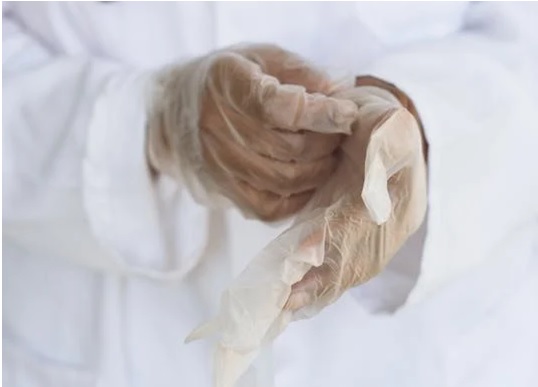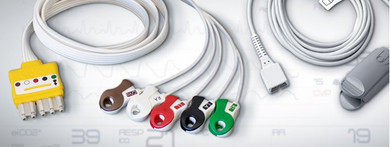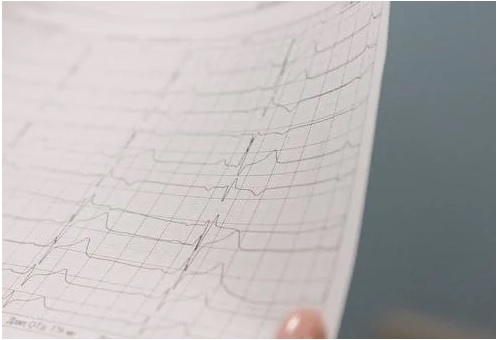ECG recordings, which monitor the electrical activity of the heart, are useful for pre-operative monitoring (and also for monitoring the heart’s rhythm during some procedures) just as much as they are for diagnosing arrhythmias and other cardiac conditions.
It may be necessary to administer a 12-lead ECG before emergency operations, intermediate surgery, or other high-risk procedures. During other procedures requiring anesthesia, it may be necessary to administer a 3-lead to monitor the heart’s activity.
One potential but significant complication arises from the use of reusable ECG lead wires. While high-quality lead wires can be economical and theoretically be decontaminated and reused between patients many times, the use of reusable lead wires presents a potentially elevated risk of dangerous cross-contamination and infections among patients.
The Necessity of Pre-Operative and Post-Operative ECG Administration
In patients that are known to have cardiac complications, such as arrhythmias or heart defects, a preoperative ECG is necessary to help prevent issues during subsequent procedures. This is a reasonable precaution.1
The administration of a preoperative ECG in patients whose cardiac health is otherwise understood to be normal is primarily delivered as a baseline against which to compare a postoperative ECG in order to determine abnormalities in heart rhythm.1
A 3-lead ECG is commonly administered during procedures in order to keep a constant watch over cardiovascular function during the course of the operation, as well as to monitor the cardiac rhythm while the patient is under general anesthesia.
These considerations are taken in order to enable extremely rapid responses to changes in cardiac rhythm during a procedure, as well as to help healthcare practitioners and surgeons identify and rectify complications before they become serious.
The need to monitor cardiac function before, after, and often during these procedures will not diminish. Therefore it becomes imperative to shift the objective to contamination mitigation and infection prevention instead.
Infection Risk Among Reusable ECG Lead Wires
Infection risk is an ever-present concern in medical facilities, and presents a marked danger to patients that are immunocompromised or who are undergoing heart surgery, specifically because the leads are placed close to the incision site on the chest.2
Infection risk is also a particular concern for others that are critically ill or otherwise deemed to be at high risk.2
More than one study has suggested that non-critical medical devices (such as ECG lead wires) can easily become contaminated by pathogens (including antibiotic-resistant strains that can be hard to treat, and possibly even fungal pathogens).3
In one study, over 400 cleaned ECG lead wires (from more than 90 different patients, across 4 different ICUs and one PACU) were stirred in an NaCL solution which was then blood-cultured, after which the present CFUs were counted and identified.
More than half of the examined and tested ECG lead wires were contaminated with more than 20 CFUs/mL of bacteria or other pathogens identified as a risk.3 Among these pathogens were aerobic spore-forming bacteria and coagulase-negative staphylococci. It may also be noted that rates of contamination were higher among multi-lead ECG wires.
Another study, although not necessarily directly dedicated to determining infection risk associated with contaminated lead wires, nevertheless determined that as many as 77% of lead wires had been contaminated by antibiotic-resistant microorganisms.4
Consequently, it can be determined that manual disinfection methods may not be adequate to eliminate the risk of infection between patients when reusable ECG lead wires are employed in cardiac monitoring.
It is also necessary to note that methods for disinfection must be improved where reusable lead wires are to be utilized; all the same, as these procedures develop and are improved, single-use ECG lead wires present a reasonable alternative that produces effectively no risk of cross-contamination.
Why Single-Use ECG Lead Wires May Be the Solution
While hospital-acquired infections, specifically those suspected of being caused by contaminated ECG lead wires, may be rare, these infections, specifically those caused by antibiotic-resistant strains, are associated with high mortality rates and can be very costly for healthcare facilities.
Moreover, though infection prevention protocols may be ever-evolving, and we can collectively improve the measures we take to disinfect ECG lead wires, no measure can possibly eliminate 100% of the microbes that survive on electrodes and lead wires.5
Therefore, the only way to completely eliminate the risk of cross-contamination and infection among patients is to use single-use ECG lead wires when administering ECGs, particularly in situations in which there is a high infection risk, such as during heart surgery.

LifeSync: Your Source for High-Quality ECG Lead Wires, ECG Cable Adapters, Radiolucent Lead Wires, and More
In addition to our wide range of reusable ECG lead wires, we also sell a variety of single-use lead wires as well as other ECG accessories such as ECG cable adapters and radiolucent lead wires.
For more information on our collection of ECG cable adapters and lead wires, please consult the previous link or get in touch with us directly at 1-800-358-2468.
Sources
- Khan T, Mir SY, Wani SQ. Discovering substitutes to the conventional lead positions of three-lead electrocardiogram monitoring. Ann Card Anaesth. 2019 Apr-Jun;22(2):236-238. doi: 10.4103/aca.ACA_89_18. PMID: 30971615; PMCID: PMC6489388.
- Bloe C. The role of single-use ECG leads in reducing healthcare-associated infections. Br J Nurs. 2021 Jun 10;30(11):628-633. doi: 10.12968/bjon.2021.30.11.628. PMID: 34109824.
- Lestari T, Ryll S, Kramer A. Microbial contamination of manually reprocessed, ready to use ECG lead wire in intensive care units. GMS Hyg Infect Control. 2013 Apr 29;8(1):Doc07. doi: 10.3205/dgkh000207. PMID: 23967393; PMCID: PMC3746603.
- Reshamwala A, McBroom K, Choi YI, LaTour L, Ramos-Embler A, Steele R, Lomugdang V, Newman M, Reid C, Zhao Y, Granger BB. Microbial colonization of electrocardiographic telemetry systems before and after cleaning. Am J Crit Care. 2013 Sep;22(5):382-9. doi: 10.4037/ajcc2013365. PMID: 23996417; PMCID: PMC4360902.
- Brown DQ. Disposable vs reusable electrocardiography leads in development of and cross-contamination by resistant bacteria. Crit Care Nurse. 2011 Jun;31(3):62-8. doi: 10.4037/ccn2011874. PMID: 21632593.


